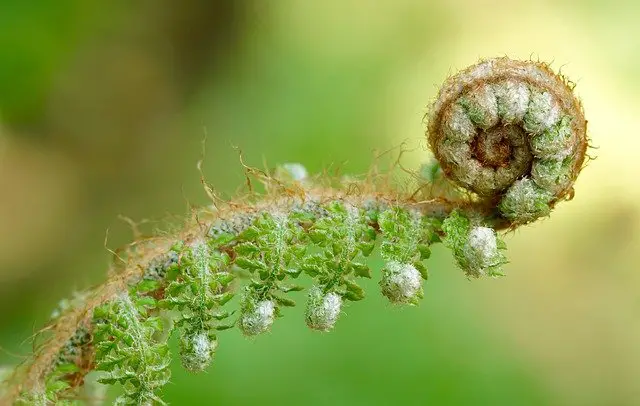This post contains affiliate links. When you buy through our links, we may earn a commission.
Are you contemplating over the fact of what do fiddleheads taste like? If yes, then you are at the right place, as here we will tell you how you can cook fiddleheads to achieve their unique taste. Besides, we know that you are concerned about its toxic effects as many farmers don’t harvest it because of this reason.
That’s why fiddleheads are rare and expensive, and you have to go to wild areas to hunt them yourself. Moreover, raw fiddleheads are causing many diseases in the people of the US and Canada. It’s because ostrich ferns are mainly available in many parts of North America. So, for better understanding, we will also let you know a quick overview of fiddleheads.
Let’s dig in deep to know about the charming taste of spring delicacy-fiddleheads!
What Are Fiddleheads?
Fiddleheads are the tips of ferns that are closely coiled. This spring delicacy can be a quest from the ostrich fern. You know fiddleheads are the young shoot of plants that pops out from the dirt in the form of small scrolls. Moreover, the young fronds can be found by foraging.

Fiddleheads of ostrich ferns are eaten mainly by the people of North America. Moreover, it’s because they are readily available in temperate woodland regions and stream areas. Fiddleheads grow in the form of thick clusters from the northern plains to the US’s east coast.
Are Fiddleheads Expensive?
The delicious fiddleheads are hunted from shady and moist areas at the start of April. You don’t need to probe them yourself as they can be found in wild food markets. However, it’s also a fact that they are not available in generous amount.
You know that fiddleheads have a short season, and that makes it quite expensive. They fetch a heavy price according to their demand. Moreover, these volute scrolls come with a price tag of $10 to $15 per pound in rare areas. However, fiddleheads are common in some parts of England, so they come in half of that price.
5 Benefits of Eating Fiddleheads
When it comes to fiddleheads’ benefits, they have significant nutritional factors for the body, eyes, and hair. Some of them are as follows:
- Energy Booster
It’s essential to have the type of food that plays a vital role in managing your body’s energy levels. That’s why including fiddleheads in your food will provide you zinc mineral that contributes to cell signaling.
You know that zinc is one of the vital minerals which boost your energy. It also helps in protein synthesis and growth of the body.
- Helps To Lose Weight
These curly ferns are full of nutrition, and they help you to lose weight quickly. You must know that 100 grams of fiddleheads have 34 calories. Moreover, the fibers present in it slow down the release of the hunger hormone ghrelin.
That hormone basically transmits a signal to the brain if you are feeling hungry. So, in this way, fiddleheads can make you feel satisfied with less intake of calories.
- Control Blood Pressure
You know about 75 million American adults have the problem of high blood pressure. That means one in every three adults is suffering from this problem. Even kids can have high blood pressure. To avoid this, you should take less amount of sodium in your diet and exercise regularly.
Moreover, doctors suggest that you should eat food that contains potassium. Fiddleheads are a great source of potassium as they contain 370 mg per 100g. Having these coiled ferns in your diet will help you to control blood pressure.
- Fight Infections
Everyone knows that your body has antibodies that fight against infections. Although, you also have to eat food that contains natural antioxidants. So, fiddleheads are known to contain 44% of vitamin C per 100 grams.
You know vitamin C is a potent water-soluble antioxidant that allows the body to fight against infectious agents. It also eradicates the free radicals that can cause cancer.
- Rich in Antioxidants
Beta-carotene present in fiddleheads is an excellent source of reducing the risk of cancer. If you consume 1.7 to 2.7 milligrams of beta-carotene per day, then there is a 40 percent chance of preventing lung cancer. Besides, fiddleheads contain other antioxidants such as vitamin C, potassium, calcium, and vitamin- B complex. All of them are very effective in curing stomach ulcers.
What do Fiddleheads Taste like?
After going through the benefits of fiddleheads, you might want to add them to your daily meals. However, you must be wondering what do fiddleheads taste like? We all know that it’s green in color, then its taste must be like any other green vegetable.
That’s not the case because fiddleheads have a unique taste. You can describe it as a mixture of spring and the grassy thing with a touch of crispiness. Besides, its taste can be a combination of asparagus and young spinach. Some people also say that it’s like artichoke or a bit of mushroom.
How do You Cook Fiddleheads?
If we talk about cooking fiddleheads, then you have to go through a process first. When you get a bunch of these scrolls, make sure to remove the brown paper scale properly. Then wash them in multiple changes of cold water to get rid of dirt.
For cooking fiddleheads, first, add them in boiling water for 15 minutes. You can also steam them for 10 to 12 minutes until they become soft. Basically, it’s cooked to remove the substances that can cause symptoms of food poisoning. After they become tender, you can serve them with vinegar or melted butter.
Moreover, some people like to cook them until they just spread on toast and you can enjoy it heartily. Cooked fiddleheads can be used in different recipes. You can just swap asparagus with coiled ferns and make fiddleheads stir-fry, veggie-packed squash sautés. Besides, they can also be used as a filling in a breakfast omelet. By using coils in Barely risotto makes it a star of seasoning. Chilled fiddleheads can also be added to a fresh garden salad.
How Can You Tell If Fiddleheads Are Edible?
You know all ferns have fiddleheads, but not all volute scrolls are meant to forage. They can be found from foxglove and bracken ferns which are toxic in nature. From all the varieties of ferns, only the ostrich and cinnamon fern are edible and safe.
You can identify the edible one by observing the stem, as you should only collect within two inches of stem attached to fronds. Moreover, they are about an inch in their diameter. There is also a groove that is deep and U-shaped inside the fern stem for identification.
Besides, it’s important to break off the stem’s extra part when you pick the edible fiddleheads. You should never forage the whole patch because it will destroy the remaining fern. It’s best to take three coils from each fern.
Are Raw Fiddleheads Poisonous?
It’s not like we want to ruin your appetite, but you must make sure that you don’t eat raw fiddleheads. No matter how tempting it feels to eat these fresh and green coils. We advise you not to do it on the spur of the moment.
There are concerns that raw fiddleheads can be poisonous and unpleasant to eat. Besides, if you eat too many raw fiddleheads, then it can cause many stomach problems. Also, it carries foodborne illness. So, make sure to always wash, cook and store them properly.
Furthermore, according to Health Canada’s website, if you eat raw fiddleheads, then you might get diarrhea, nausea, abdominal cramps, and headaches. The agency claimed that many people in the US and Canada are getting sick from consuming raw ferns.
Why Are Fiddleheads Toxic?
You know that fiddleheads are coiled and edible shoots of the ostrich fern. They are gathered from the wild areas to sell in stores and markets. However, now people are getting sick by consuming them, and they are concern about its reason.
Fiddleheads are toxic because of an unidentified natural toxin in them. Also, some ferns are naturally poisonous, such as bracken and foxglove fiddleheads. They contain carcinogens that can cause severe illness. Even other ferns can cause food poisoning if you eat undercooked coils.
Moreover, you might feel the symptoms of foodborne illness that start to appear from 30 minutes to 12 hours after ingestion. Other than an upset stomach, it can also result in dehydration. Its more common in elders, infants, and those who are in compromised medical condition.
Conclusion
Now, you have a brief idea of what do fiddleheads taste like? You can sure enjoy the exceptional sweet taste that has a hint of broccoli stem. However, it’s essential to remove the slight trace of toxicity and rub off any brown skin husk.
After doing that, you can cook them for at least 5 minutes, and then they can be quickly steamed, sautéed, roasted, braised, and pickled. Although you can make many things with these spritely and fresh coils, it’s better to serve them in a simple dressing of vinaigrette.
So, why don’t you try this seasonal delicacy that provides excellent benefits to your health!
